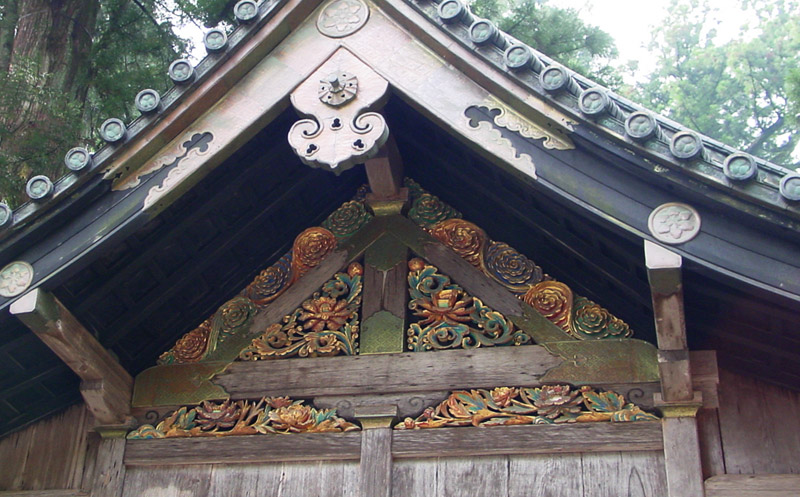Openwork.
A method of decoration in which a design is cut out of a plain surface. While
sukashibori refers to openwork decoration made with a wide variety of materials
including ceramics, stone, glass, and leather, in Japan the term is most commonly
associated with metalwork. The metal sheet, most commonly iron or copper, is prepared
by casting or hammering. A piercing burin sukashitagane §µèS or scroll saw
itonoko
is then used to engrave the design. There are two types of sukashibori:
jisukashi n§µ where the ground is pierced completely, and mon'yousukashi
¶l§µ where the design is cut away in relief but leaving some of the original material
as back ground. Sukashibori, particularly mon'yousukashi, is used
for the decoration of incense burners, iron lanterns, and sword guards. Jisukashi
is important in making the halos for Buddhist statues. In the Asuka and early
Nara periods, the halo of the Buddha was usually made of copper, and decorated
with flame and arabesque patterns in sukashibori. In the Heian period,
sukashibori began to be executed in wood as well as metal to make, for
example, an arabesque halo karakusa kouhai õw, and a flying apsaras halo
*hiten kouhai òVõw,
showing dancing heavenly figures around the central Buddha image.
Sukashibori
is also used in the decoration of *ranma
Ô and *kaerumata å¯Ò in
wooden architecture of the Momoyama and Edo periods. |



